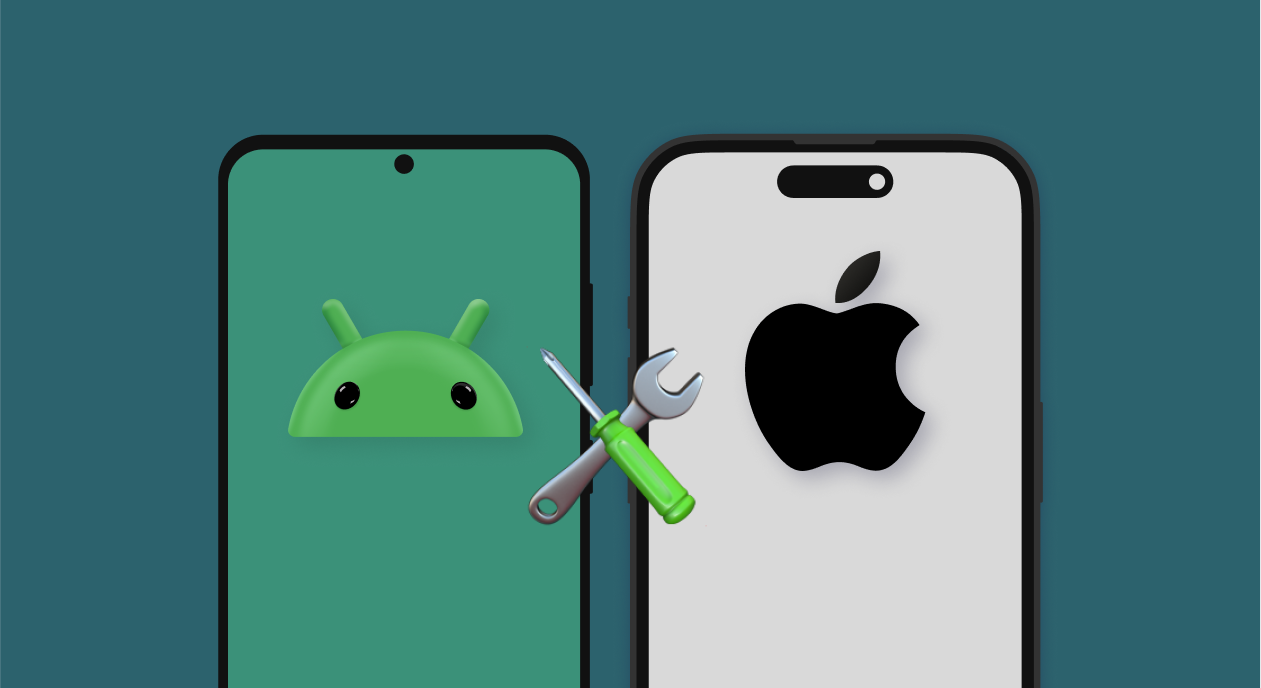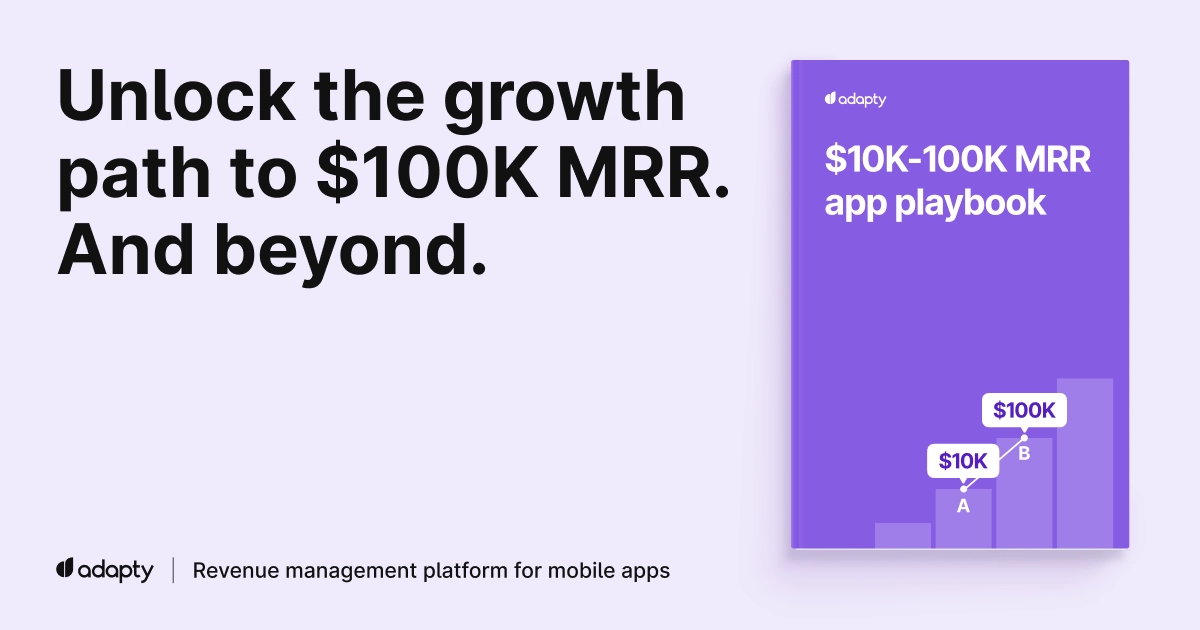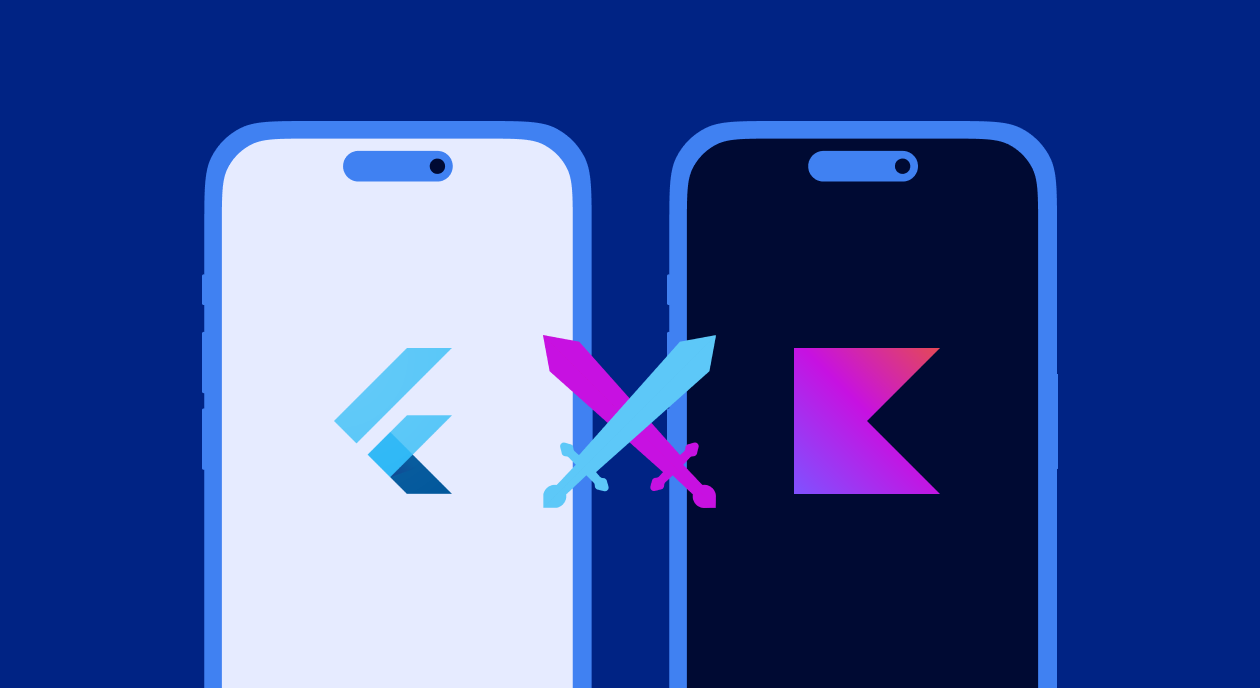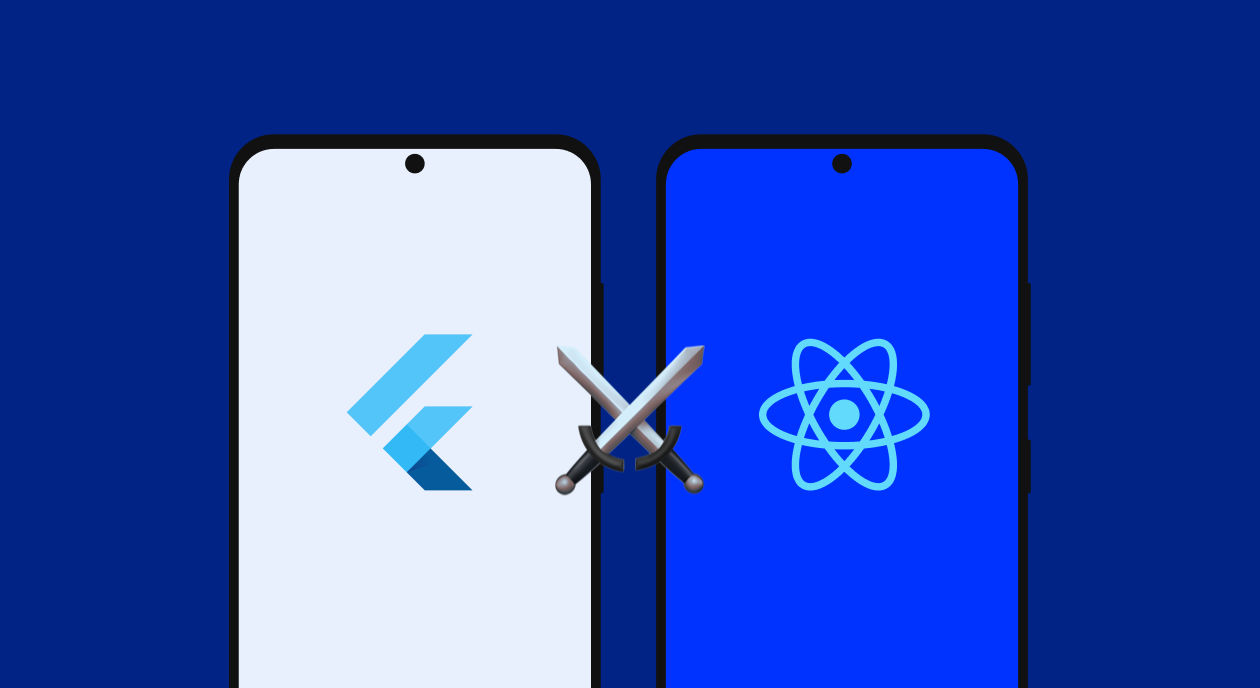In 2024, there are only two genders: Android and iOS. Just kidding — but not really.
In this guide we talk about the key advantages and obstacles the development for each mobile operating system entails. Explore the pros and cons, uncover market trends, and determine the best fit for your app development journey. Don’t miss out—get the insights you need to succeed!
App development market trends
After 15 years on the market, both iOS and Android are well-known. Let’s talk about the more recent insights:
iOS continues to dominate in terms of revenue, generating significantly higher app and in-app purchase earnings compared to Android. Apple customers tend to spend more on apps, which can lead to higher returns on investment for developers targeting this platform.
This is partially caused by the fact that iOS has a strong presence in affluent markets such as North America, Western Europe, and Japan. The users in these regions generally have higher incomes and are more willing to spend on premium apps and in-app purchases.
Just like everywhere else these days, iOS app development now includes the rise of AI-powered services and IDEs. While there’s no AI support in XCode yet, Microsoft Copilot is more than capable to help you program in Swift.
Android, on the other hand, holds a larger global market share, particularly in emerging markets such as Asia, Africa, and Latin America. This broad reach provides a vast potential user base, making Android a preferred choice for those aiming for mass market penetration.
Android’s open-source nature allows for greater flexibility and customization, enabling developers to create unique app experiences for unique devices. There is now a significant rise of foldable and Android dual-screen devices, which give more screen real estate for the app, but also require more attention to usability in different modes.
What’s the difference between Android and iOS development?
Now let’s compare what it’s like to develop for iOS and Android.
Learning curve
For iOS development, you’ll primarily work with Swift, Apple’s modern and user-friendly programming language. Although Xcode can be overwhelming at first due to its extensive features, it offers excellent tools and debugging capabilities. The consistency of the iOS ecosystem simplifies the testing process, and the abundance of learning resources makes it easier to get up to speed. However, you’ll need to familiarize yourself with Apple’s Human Interface Guidelines and navigate the stringent App Store review process.
On the other hand, Android development involves either Java or Kotlin, with Kotlin being the more concise and approachable option. Android Studio, the official IDE, is powerful but complex, requiring a good grasp of Gradle for build automation. A significant challenge is dealing with device fragmentation due to the variety of Android devices and OS versions.
Programming languages
Swift is the language of choice for iOS development. Designed by Apple, Swift is known for its clean and modern syntax, making it relatively easy to learn, especially if you have experience with other programming languages. Swift emphasizes safety and performance, with features that prevent common coding errors and enhance efficiency. Apple’s extensive documentation, tutorials, and active developer community provide excellent support for newcomers.
Kotlin is the preferred language for Android development, developed by JetBrains. Kotlin is designed to be concise and expressive, reducing boilerplate code and improving readability. It’s fully interoperable with Java, allowing you to leverage existing Java libraries and frameworks while enjoying Kotlin’s modern features. Kotlin’s learning curve is gentle, making it accessible for both beginners and experienced developers. You can also read Flutter or Java: learn about the differences in these languages by reading our guides.
Target audience
iOS users tend to be more affluent (given the iPhone prices, it comes as a no surprise) and are often willing to spend more on apps and in-app purchases. They are typically found in regions like North America and Western Europe. iOS users also tend to upgrade their devices and operating systems more frequently, ensuring a more uniform user base with the latest software capabilities. This can simplify development and support efforts, making it easier to deliver a consistent user experience.
Android users are more diverse and are mostly found in emerging markets like Asia, Africa, and Latin America. This diversity includes a broader range of device capabilities and operating system versions, presenting both opportunities and challenges. Android’s larger global market share means a potentially larger user base, but it also requires careful consideration of device fragmentation and varying user preferences.
Just remember this: iOS users spend more money in-app, and Android users bring more installs.
Development budget
iOS development generally requires a higher initial investment due to the need for Apple hardware (Macs for development and various iOS devices for testing). Additionally, the App Store has a high annual developer fee of $99. However, the more uniform hardware and software environment can lead to lower testing and maintenance costs.
Android development can be more cost-effective initially, as it allows for development on a wider range of hardware, including Windows, macOS, and Linux systems. The Google Play developer fee is a one-time payment of $25, making it cheaper than Apple’s annual fee. However, the diversity of Android devices means you might need a larger budget for testing across various models and OS versions. Ongoing maintenance costs can also be higher due to the need to support a wide range of devices and operating systems.
Development environments, IDE
iOS development relies on Xcode, Apple’s official integrated development environment (IDE). Xcode is available only on macOS, so you’ll need an Apple computer to develop iOS apps. It offers a comprehensive suite of tools, including a code editor, debugger, and interface builder, all seamlessly integrated. Xcode’s Interface Builder simplifies UI design with drag-and-drop elements, and the simulator allows you to test apps on various iOS devices.
Android uses Android Studio, the official IDE provided by Google. The app is available on Windows, macOS, and Linux, offering more flexibility in terms of hardware. Android Studio includes robust tools for code editing, debugging, and performance analysis. It also features a rich layout editor that supports drag-and-drop UI design, similar to Xcode. However, Android development can be more complex due to the need to handle device fragmentation and a variety of Android OS versions.
System-specific design
iOS App design is legendary for its clarity and strictness:
- Apple’s Human Interface Guidelines (HIG) emphasizes clarity, deference, and depth. iOS apps are expected to have a clean, consistent, and minimalistic design. The focus is on content, with ample use of white space and a hierarchical structure that guides users through the app intuitively.
- iOS typically uses a tab bar for primary navigation at the bottom of the screen and a navigation bar at the top for contextual navigation. Gestures like swiping are heavily used for navigation and interaction.
- iOS apps often feature flat design elements with subtle gradients and shadows to create a sense of depth. Icons and buttons are generally simple and easily recognizable.
- Uniformity across different iOS apps is a key principle, helping users to easily adapt to new apps. This includes standard button placements, common gestures, and familiar UI components.
Android user interface also tried to become more uniform in last years:
- Google’s Material Design principles focus on creating a tangible, tactile user experience. This includes the use of bold colors, responsive animations, and depth effects like shadows and lighting to mimic real-world interactions.
- Android apps commonly use a navigation drawer for primary navigation and bottom navigation bars in more recent design trends. Android also utilizes floating action buttons (FABs) to highlight the primary action in an app.
- Android’s design language encourages the use of large, vibrant images, and dynamic color schemes. Components often have distinct, customizable appearances to create a unique brand identity.
- Android’s design guidelines provide more flexibility, allowing for greater customization and differentiation between apps. This is necessary to accommodate the diverse range of Android devices and user preferences.
Development complexity
App development for iOS is generally considered less complex due to the uniformity of Apple’s ecosystem. With fewer device variations and a consistent operating system, testing and optimization are more straightforward. Swift, the primary programming language, is modern and relatively easy to learn, and Xcode provides a comprehensive set of integrated tools. However, Apple’s stringent app review process and adherence to strict design guidelines can add some complexity to the development process.
Android developers must account for significant device fragmentation, which requires extensive testing and optimization. While Kotlin, the preferred programming language, simplifies coding with its concise syntax, managing dependencies and building processes with Gradle can be challenging. Android Studio is powerful but can be overwhelming for beginners, and maintaining compatibility across diverse devices adds to the overall development complexity.
App testing
App testing on iOS is generally more streamlined due to the limited number of devices and operating system versions. The consistency of Apple’s hardware and software ecosystem simplifies the testing process. Xcode includes a built-in simulator that allows you to test apps across various iOS devices and screen sizes. Additionally, Apple’s TestFlight platform enables easy distribution of beta versions to testers, facilitating feedback and iterative improvements.
Android is a different story: teams need to ensure their apps function correctly across this diverse ecosystem, which requires extensive testing on physical devices and emulators. Android Studio provides a robust emulator and integration with Firebase Test Lab for cloud-based testing on multiple device configurations. Managing this complexity can be challenging, and ensuring compatibility and performance across all target devices demands significant effort.
Return on investment
iOS apps often yield a higher return on investment due to the spending behavior of iOS users, who are typically more willing to pay for apps and in-app purchases. iOS users frequently update their devices and operating systems, ensuring a consistent user base with access to the latest app features. While initial development costs may be higher, the potential for higher revenue can offset these expenses, making iOS development a financially attractive option.
Android’s larger global market share offers significant revenue opportunities, especially in emerging markets. Development costs can be lower initially, with more flexible hardware options and a cheaper developer fee. However, the need to support a wide range of devices and OS versions can increase testing and maintenance costs. Success on Android often hinges on the ability to effectively manage the platform’s diversity and capitalize on its extensive reach.
| No matter the platform, your app’s revenue and ROI above all depends on the monetization strategy. Subscriptions are a strong choice: they offer recurring and foreseeable revenue. Adapty is designed specifically to simplify monetization and boost revenue of subscription apps. It works both on iOS and Android and requires little to no coding. Request demo now! |
The pros and cons of iOS app development
Let’s compare the key aspects of programming for iOS devices.
Pros of iOS app development
- iOS users tend to spend more on apps and in-app purchases compared to Android users. This can lead to higher revenues, especially for premium apps or those with significant in-app purchase options.
- Apple’s ecosystem is relatively uniform, with fewer device variations and a more consistent operating system update cycle. This reduces the complexity of testing and optimization, ensuring a smoother development process.
- Swift is designed to be easy to learn and use. Xcode offers comprehensive tools that streamline coding, debugging, and UI design. The tight integration within the Apple ecosystem further enhances the development experience.
- Apple’s strict app review guidelines ensure that apps on the App Store meet high standards for quality and performance.
- The limited range of iOS devices simplifies the testing process. Apple provides robust tools to ensure that apps perform well across all supported devices and OS versions.
Cons of iOS app development
- Apple hardware is costly yet necessary for development, and the annual developer fee for the App Store is higher compared to the one-time fee for Google Play.
- Apple’s app review process is famously rigorous and time-consuming.
- iOS development follows strict guidelines set by Apple, which can limit customization and creativity.
- While iOS has a strong presence in regions like North America and Western Europe, it has a smaller global market share compared to Android. This limits the potential user base, especially in emerging markets where Android dominates.
- Development for iOS requires an Apple computer, which can be a significant additional expense if you don’t already own one. This hardware dependency can be a barrier for developers who prefer or already own non-Apple development machines.
| Aspect | Pros | Cons |
| Money | Higher revenue potential from user spending | Higher initial costs due to Apple hardware and developer fees |
| Process | Consistent hardware and software environment simplifies testing | Stringent app review process can delay app releases |
| Simplicity | User-friendly development tools like Swift and Xcode | Limited flexibility due to strict Apple guidelines |
| Platform limitations | High-quality user experience due to Apple’s standards | Smaller global market share compared to Android |
| Necessary tools | Efficient app testing with Xcode’s simulator and TestFlight | Requires Apple hardware, which can be a significant investment |
The pros and cons of Android app development
Pros of Android app development
- Android holds the majority of the global smartphone market share, particularly in emerging markets like Asia, Africa, and Latin America. This broad reach provides a vast potential user base for app developers.
- Developing for Android can be more cost-effective initially. Android Studio is available on various operating systems, including Windows, macOS, and Linux, providing flexibility in hardware choice. Additionally, the one-time Google Play developer fee is lower compared to Apple’s annual fee.
- Android offers greater flexibility and customization options for developers. The platform’s open nature allows for more creative freedom in app design and functionality, enabling unique and innovative app experiences.
- Android Studio, the official integrated development environment, is a powerful tool that supports a range of features for coding, debugging, and performance analysis. The support for Kotlin, a modern and expressive language, further enhances the development experience.
- Besides the Google Play Store, Android apps can be distributed through various third-party app stores, increasing the avenues for reaching users. This can be particularly beneficial in regions where alternative app stores are popular.
Cons of Android app development
- Android devices are many, with varying screen sizes, hardware capabilities, and OS versions. This complicates the testing and optimization process. Ensuring compatibility and performance across all target devices can be challenging and time-consuming.
- Supporting a wide range of devices and OS versions often leads to higher ongoing maintenance costs. Developers need to regularly update apps to ensure compatibility with new devices and OS updates.
- The open nature of Android and the availability of third-party app stores can increase the risk of security vulnerabilities. Developers must be vigilant about security practices to protect user data and maintain app integrity.
- While the large user base offers potential, Android users are generally less likely to spend on apps and in-app purchases compared to iOS users. This can impact revenue generation and may require developers to explore alternative monetization strategies, such as ads.
- Android Studio, while powerful, can be overwhelming for beginners. The complexity of managing dependencies with Gradle and dealing with the diverse Android ecosystem can pose a steep learning curve for new developers.
| Aspect | Pros | Cons |
| Potential profits | Larger global market share and user base | Monetization challenges with less user spending |
| Costs | Lower initial development costs | Higher ongoing maintenance costs |
| Open Source | Greater flexibility and customization | Security concerns due to the open nature and third-party app stores |
| Development | Robust development tools with Android Studio and Kotlin support | Device fragmentation complicates testing and optimization |
| Distribution | Wide range of distribution options beyond Google Play Store | Paid apps get ‘unlocked’ and pirated |
Android or iOS: which platform to start with?
Choosing between Android and iOS as the platform to start your app development depends on various factors. Hopefully, after reading this guide, the answer to this question is easier.
If you choose to develop for iOS, you can benefit from higher revenue potential as iOS users are known for spending more on apps and in-app purchases. Swift and Xcode provide a user-friendly and comprehensive development environment, making it easier for beginners to get started. However, you must invest in Apple hardware, and the stringent app review process requires adherence to strict guidelines, which can delay app releases.
If you choose to develop for Android, you will have access to a larger global market share, and more affordable installs. You can develop on any device: Android Studio is available on multiple operating systems. The openness of the platform allows for greater customization and innovative app designs. However, the diversity of devices and OS versions complicates development and testing, leading to higher ongoing maintenance costs.
Conclusions
Know somebody too lazy to read this whole article? Share this screenshot.
Start with iOS, if:
- Your primary target audience is in North America or Western Europe.
- You aim to generate higher revenue through app sales and in-app purchases.
- You prefer a more uniform development environment with less fragmentation.
- You have or are willing to invest in Apple hardware.
- Your potential users value higher app security and stricter privacy controls provided by Apple’s ecosystem.
Start with Android, if:
- You want to reach a larger and more diverse global audience, particularly in emerging markets.
- You need a lower initial development cost and flexibility in hardware choices.
- You value the ability to customize and innovate with fewer restrictions.
- You are prepared to handle the complexities of device fragmentation and varied OS versions.
- You want to leverage advanced AI and machine learning features available on the Android platform, such as those supported by Google Assistant and other AI-driven applications.
Ultimately, the decision should align with your target market, budget, and long-term business strategy. Many successful developers eventually create apps for both platforms to maximize their reach and revenue. And with Adapty, the success doesn’t depend on your platform!




